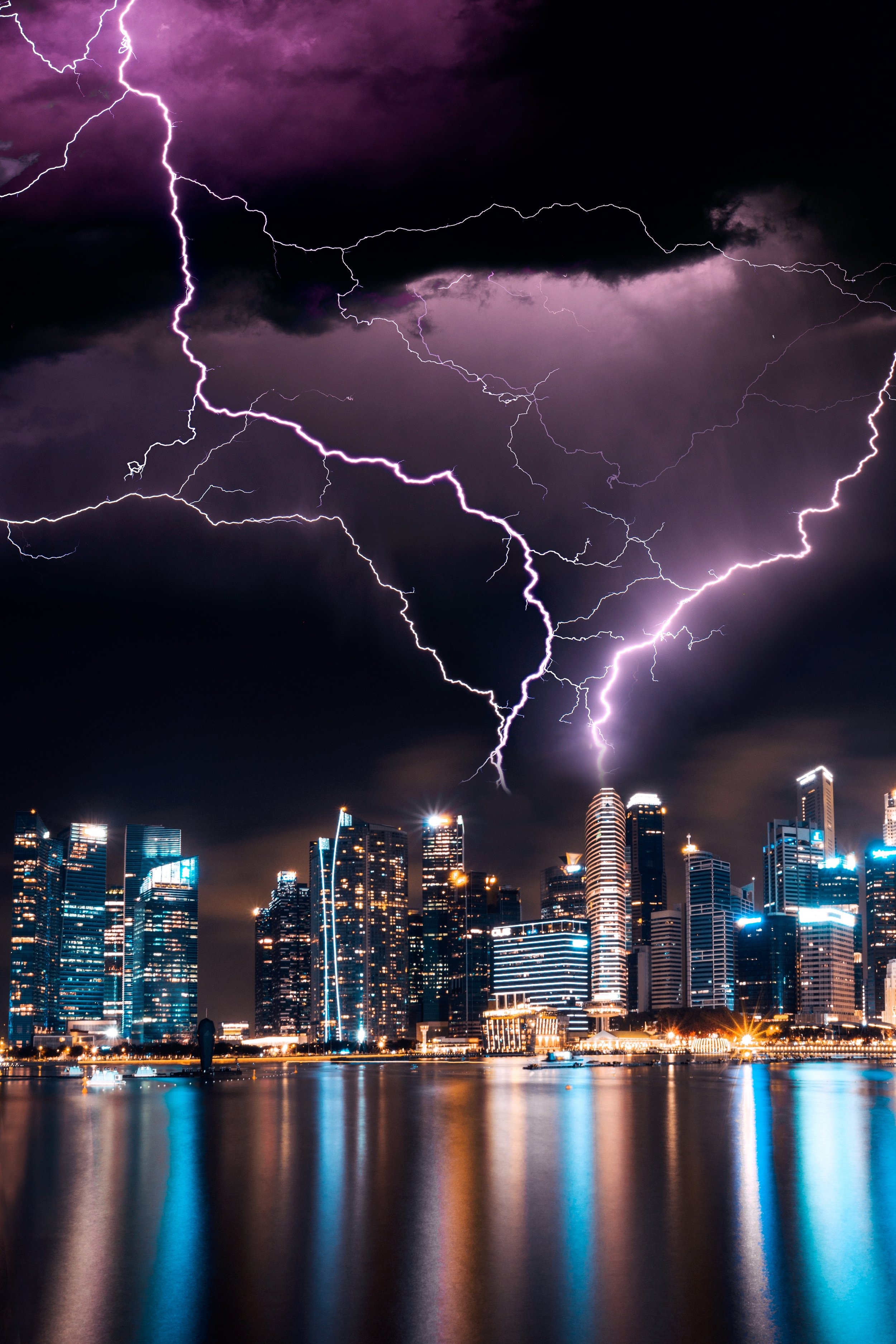Have you made your dog afraid of thunder?
Summer often brings more thunder and lightning storms.
Some dogs cower and hide at the approach of a storm, or the crack and screech of fireworks.
Yet why is this, when so many dogs are happy to stand next to a shotgun and bound off to retrieve a rabbit?
Is it possible you have you made your dog afraid of thunder?
In this article I discuss this paradox, and set out some simple, sedative-free steps to help owners communicate to their dogs that - if not enjoyable - thunder is nothing to fear.
Thunderbolts and lightning, not the least bit frightening!
After the recent dramatic thunderstorms in Victoria, you may have been distressed about the fear and anxiety your dog displays as nature’s son et lumière begins.
The good news is that the distress for you and your dog is entirely avoidable, and without recourse to sedatives! In a relatively short time, by using all the opportunities that mother nature provides, and some human creativity, you can help your dog perhaps not to love thunder, but at least not to fear it.
The answer lies in how you behave, and how you react and communicate with your dog when they look to you – another member of the pack – for guidance.
Like us, dogs may get a surprise when they hear a loud noise, like thunder, fireworks or a loud engine. They look around to the rest of the pack to help them assess whether they should be afraid, or not.
But what is so frightening about thunder or fireworks? Well, nothing, of course! In fact, many people enjoy firework displays and the stunning show of a storm.
Loud and unpleasant noises can be very pleasant if they are associated with something enjoyable. The clanging and banging of a metal bowl will bring a dog running at feeding time.
Dogs trained to retrieve in the field will happily stand by a 12 bore being fired at scattering rabbits, followed by the fun of retrieving game.
The chain of events that lead to anxiety and fear
Let’s imagine you have a young dog who has yet to experience his first thunderstorm. He is not born with a fear of that noise but it is outside his experience of the world so far.
The storm approaches. With the first loud bang, he flinches – it was loud and different. He might even be a little shocked and want to hide. He looks to other pack members to see if this new occurrence is safe and everyday, or threatening and dangerous.
Well-intended, you try to soothe the dog with a ‘there, there, don’t be afraid, it’s only a thunderstorm!’ But all the dog understands that all is not well and you are afraid. After all, if there were nothing to fear, other pack members would do nothing. What do you do when a leaf falls?
Now you think your dog is afraid of lightning. You start to anticipate the dog’s behaviour as storms approach; the dog becomes more stressed as the storm announces itself, and you reinforce the fear with your behaviour.
Humans and dogs communicate differently.
Learn to communicate like your dog
Communicating with your dog in ways he understands is the sign of a dedicated dog lover.
Humans can explain and rationalise with each other. They can reason in a sophisticated way. But when humans project human thoughts and behaviours on their dogs, things go wrong.
Combining simple and practical techniques for effectively leading your pack with positive reinforcement can approximate how dogs communicate and so you begin eliminate the fears you have taught your dog.
Learn dog...
BOOM! The thunder cracks! Your dog may well flinch and look to you. The event was as eventful as bird song. Nothing to see here! Do what you do when a bird sings: do not make eye contact with the dog, do not make physical contact with the dog do not talk to the dog. Carry on as though nothing were happening. Nothing is happening! Walk around the house, do the dishes, make a cup of tea, read a magazine.
Walk into the garden. Don’t ‘coax’ him to follow. Don’t force him to follow. If you have a covered area where you can watch the storm, sit there, calmly and quietly. If he hides behind your legs, move. If he hides under the chair, move the chair and yourself. If he jumps on your lap, gently push him off. If your dog hides behind you, move away. Remember: do not make eye contact with the dog, do not make physical contact with the dog do not talk to the dog.
Make noise fun!
It can be tricky to create positive associations with random or rare events. But, if you are expecting storms, save feeding time for the first rumbles, or offer a high value titbit with each rumble. If your dog’s anxiety is high, he is unlikely to want to eat, so if he refuses that’s fine.
You can associate loud noises with rewards. For example, at feeding times, you might clap your hands loudly once when you put food down, or drop a bin lid on concrete, or start the vacuum cleaner, for example.
This approach tackles a stressful problem holistically by creating positive associations and adjusting human behaviour.
Your dog’s behaviour didn’t happen over night, but with time, patience and consistent effort you can both begin to live free of fear.





